Subversion Installation Guide
The following guide provides instructions on how to get a command line
Subversion client working on a Windows machine using Cygwin.
You
are welcome to use other Subversion clients (such as the excellent
GUI-based TortoiseSVN client), but the lab exercises will be written
using command line instructions.
Install Subversion
As with most popular tools that Cygwin supports, Subversion is
available using Cygwin's setup program: setup.exe (available here).
Once you
have the setup program,
execute it - which will bring up the following window:
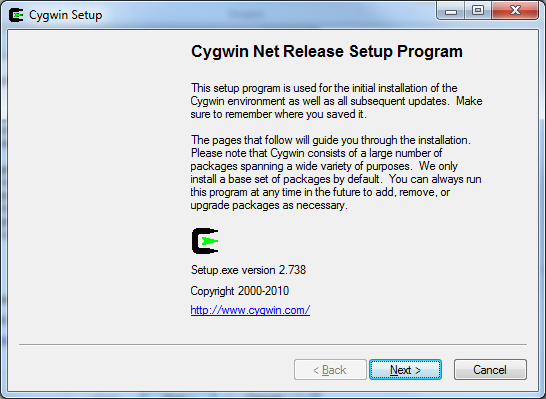
Click "Next" to get:
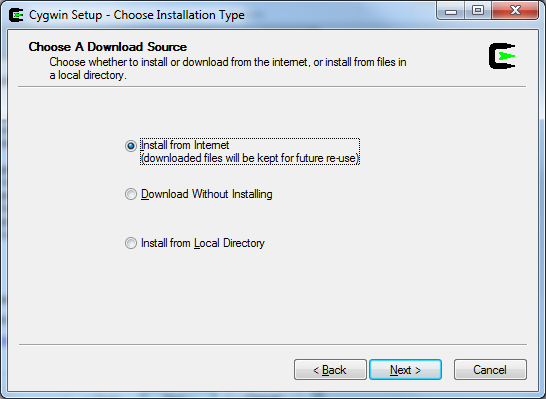
The default setting here ("Install from Internet") is what we want, so
continue by clicking "Next". Next up is the Root Install
directory selection window:
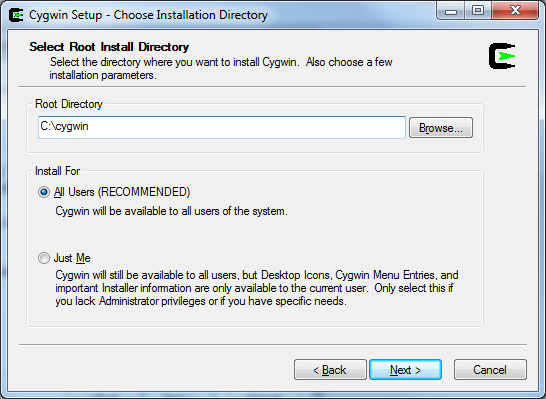
The default is fine or you may select an alternate location if you
prefer. Click "Next" to get to the Local Package Directory
selection window:
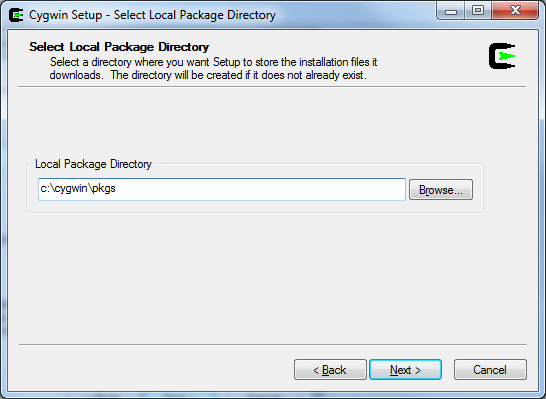
Again the default is fine or you may select an alternate location if
you prefer. Click "Next" and you'll be brought to the
Internet Connection selection window. Unless you are using a
proxy,
the default of using a direct connection
should be fine. Click "Next" and you'll be prompted to select
a download site:
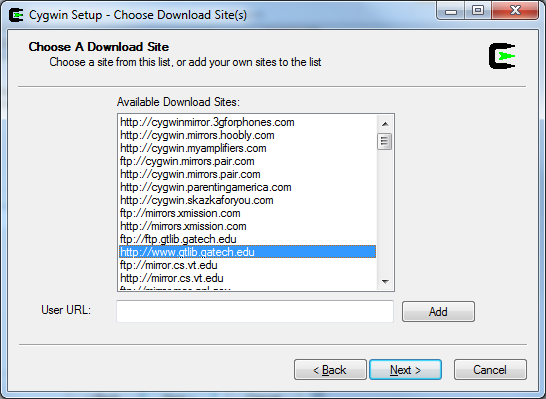
Select any download site from the list (*.edu sites tend to be quick,
especially on campus). Click "Next" and the package list will
be downloaded and displayed. In the search box type
"subversion" and expand the "Devel" branch of the tree as shown below:
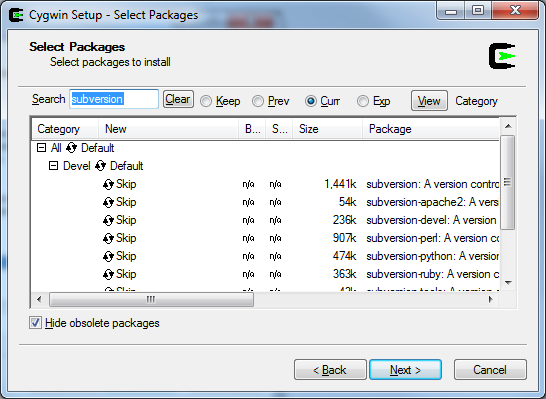
Mark the "subversion" package to be installed by clicking on the word
"Skip" next to the subversion package. This should cause a
version number to be displayed instead. The package selection
window should now look like the following (the latest available version
may differ from the screenshot):
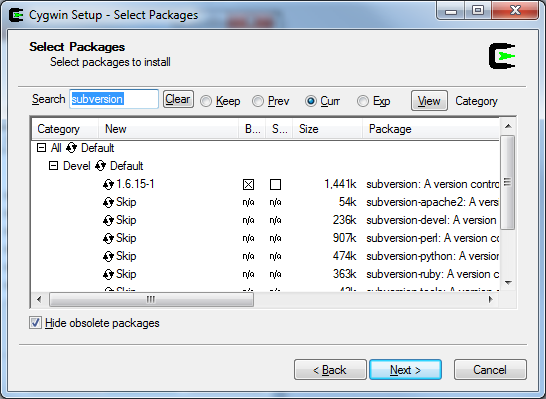
Click "Next", and the setup program will determine if any other
packages must be installed to resolve dependencies. Leave the
checkbox enabled to ensure that subversion has access to all the
libraries and tools it needs to function. This window will
appear as follows (exact dependencies calculated may differ, but you
can trust whatever list it determines):
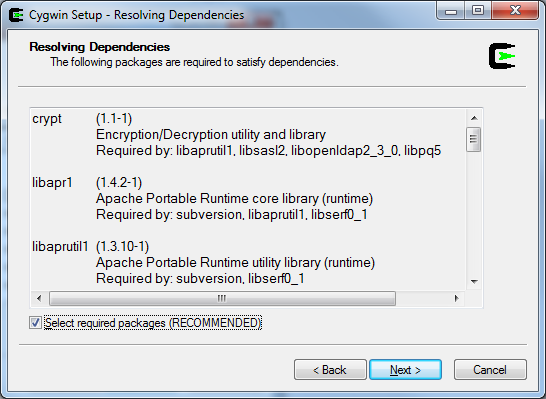
Click "Next" to and the required files will be downloaded and
installed, progress will be shown as follows:
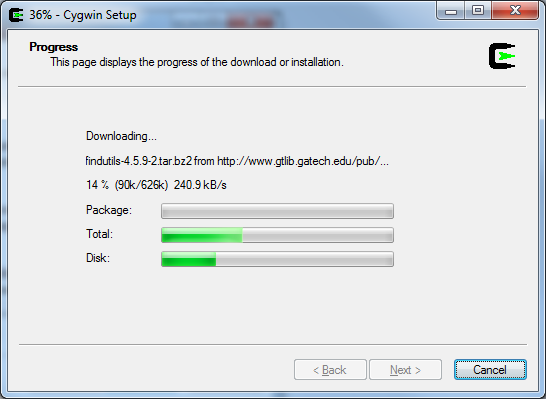
When the installation completes, the following final window will be
displayed:
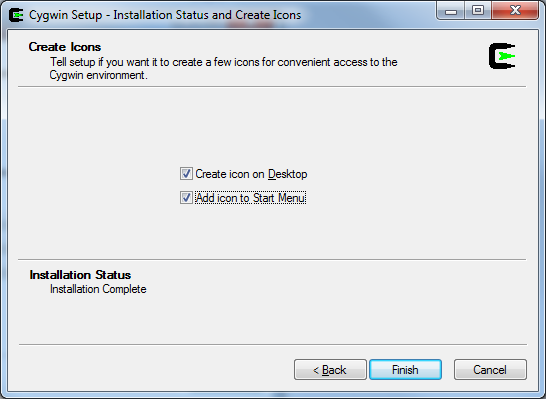
Select whether or not you want the setup program to add icons in your
start menu and/or desktop and click "Finish".
Test Installation
To verify that the installation worked as expected, start up a Cygwin
bash session (by default Cygwin places an icon on your desktop that
will do this). The first time you run Cygwin it will create
your "home" directory and will copy "skeleton files" into that
directory - don't worry this is normal. Once you receive a
prompt, run subversion and request it to print it's help string with
the following command:
Note that the command for Subversion is an abbreviation. You
should see something like this:
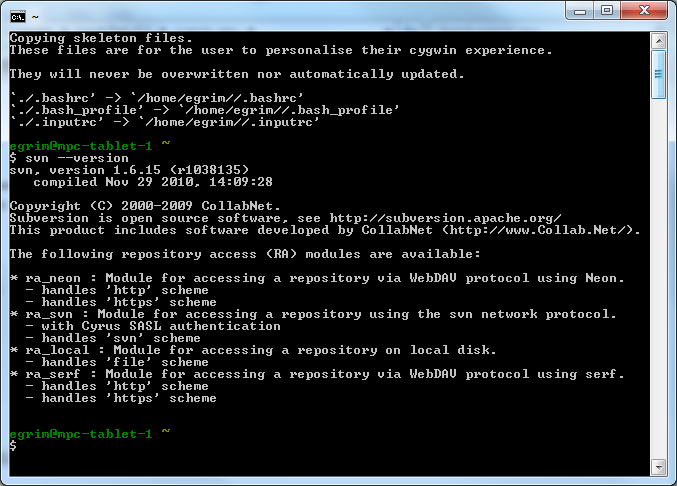
All that is important here is that no error message is printed.
If it reports a version, you have a working subversion
client!










